Almost the size of an American football field floating in the Indian Ocean, ‘Obaid’ is recognized by Guinness World Records as the world’s largest wooden Arabic dhow.
DUBAI: Adorned with the colors of the flag of the United Arab Emirates, “Obaid”, which holds the Guinness World Records as the world’s largest wooden Arabic dhow measuring 91.47-meter long and 20.42-meter wide, proudly sails in the Indian Ocean carrying loads of cargo.
Named after Obaid Jumaa bin Majid Al Falasi, an Emirati shipbuilder who began an apprenticeship at the age of nine in the mid-1940s, the dhow attests to the Emirati’s ingenious ability to build a sturdy a handmade boat made of wood despite their desert environment devoid of trees.
The length and almost half the width of a standard American football field, floating over the Indian Ocean, hypothetically speaking, balancing this huge structure on either its bow or stern vertically would make this dhow stand almost as tall as the Big Ben in London.
Decades on from the heyday of the Creek’s trading boats, a family-run yard still produces traditional hand-built vessels – and most importantly has just been recognized with the Guinness World Records title of the Largest wooden Arabic dhow.
Work on the majestic dhow started years ago, with no actual engineering vision or blueprints but was massively developed and scaled up. Local craftsmen say they own the experience, describing it as the ‘art of dhow building’.
According to Majid Obaid Al Falasi, aged 52, it is not for prestige that drove him to build the largest dhow, but for his late father, Obaid Jumaa bin Majid Al Falasi.
“Our forefathers were divers, our ancestors worked in the sea, and my own father perused this craftmanship for almost all his life. This is a gratitude to my father, and my country which always aims for the forefront positions,” said Majid Obaid.
“We tried to get the longest pieces of log available. We are born as dhow builders, and can build dhows using other material, but wood keeps its identity. This achievement is just the inevitable continuation for building dhows in the world,” he added.
A modern adaptation is adding steal to the wooden structure. The majestic dhow is larger and stronger than a traditional one, and will be able to carry four times more cargo in and out from Dubai’s docks.
“I see it in the eyes of my son. He is passionate about what I do, and what his grandfather used to do. This is what matters, for them to be able to continue the tradition and have it transferred to the next generation,” he elaborated.
The dhow stands at a height of 11.229 meters, and it weighs 2500 tonnes. It has been constructed from material sourced both locally and abroad and will have an estimated load capacity of up to 6,000 tonnes. There might be around 1700 tonnes of wood, and 800 tonnes of steel. The wood was brought from Africa, and it is mainly a jungle wood, as only nearly half of what you buy is usable.
Apart from the years of commitment and tens of dedicated skilful craftsmen, this iconic sailing vessel cost comes from the expenses of wood imports, and hundreds of thousands of nuts, bolts, screws and nails.
The dhow is powered by two 1850 horsepower engines and will used to transport cargo from the UAE to Yemen, Somalia, Sudan, Egypt, Kenya, Pakistan, India, and maybe Iraq. “At a speed of 14 knots, it will be enough for this dhow to operate and achieve its desired ROI. Who knows, you might see this dhow docking at different ports all across the world.”
Dubai Airports recently marked the 60th anniversary of the official opening of Dubai International (DXB). The occasion celebrates a remarkable success story driven by Dubai Airports’ ‘future forward’ thinking that has seen DXB emerge as the world’s leading airport. Since opening on 30 September 1960, DXB has served 1.115 billion passengers travelling on more than 7.47 million flights connecting over 240 destinations in 95 countries across the globe.
HH Sheikh Ahmed bin Saeed Al Maktoum, Chairman, Dubai Airports said, “From the outset, DXB has been a catalyst for growth. Dubai International was born from the vision of the late HH Sheikh Rashid Bin Saeed Al Maktoum who understood the vast potential of aviation and had the foresight to build the airport and promote an Open Skies policy. That vision was carried forward strongly by HH Sheikh Mohammed bin Rashid Al Maktoum, Vice President and Prime Minister of the UAE and Ruler of Dubai, who effectively positioned Dubai as a global aviation leader. DXB, which is at the center of Dubai’s proud aviation history, is testimony to the fact that great things can be achieved through vision, forward-thinking, innovation, collaboration and hard work. Over the next half a century, we will continue to strengthen our role in connecting the world and supporting the social and economic development of Dubai.”
DXB’s history is replete with examples of forward thinking and aviation firsts. It was the first airport in the Middle East to feature a gated terminal, along with the largest Air Traffic Control (ATC) tower when Sheikh Rashid terminal opened in 2000, and the first to launch e-gates in 2002. In 2008, it opened the largest airport terminal in the world (Terminal 3) and three years later the world’s first concourse purpose-built for the A380 (Concourse A). It is home to the world’s leading international airline and duty-free retail operation. DXB became the world’s busiest international airport in 2014 and welcomed its billionth passenger in December 2018.
In line with the vision and strategy of UAE’s leaders, Dubai Airports is not resting on its laurels and is focused on furthering its progress in the next 50 years and beyond.
“Each year brings new challenges and opportunities,” said Paul Griffiths, CEO, Dubai Airports. “Today we are working our way through a crisis and our recovery is well underway. DXB now serves 51% of the destinations, in 77% of the countries, and 58% of the airlines it did pre-COVID-19. We continue to advocate for standard protocols around the world that are key to safeguarding passengers’ wellbeing and accelerating the recovery of international travel. The development of a rapid COVID-19 test on departure is one such solution.
“While we are fully focused on managing our today, we have strongly set our sights on consolidating our leadership in the future. We are constantly exploring new approaches and technologies that can help us offer even more seamless, secure and rewarding travel experiences,” added Griffiths.
Dubai Airports is actively pursuing a number of initiatives to restore consumer confidence and enhance the travel experience, including airport interior design innovations, the use of single ID biometrics to facilitate contact-less travel and an e-commerce platform that will bring added choice and convenience to travellers.
“We will continue to work with the sector to boost consumer confidence and raise DXB’s capacity as traffic grows,” continued Griffiths. “While we can’t predict how long it will take for the industry to fully recover, I am optimistic that when the world will open up, the desire to travel will be stronger than ever. Dubai Airports and the entire aviation community here will be ready, just as we have been in the past 60 years.”
Qatar Airways Cargo has developed an initiative with Qatar Development Bank (QDB) that supports local perfume manufacturers in the State of Qatar.
As part of the initiative, the carrier is offering discounted rates to Qatari perfume manufacturers in order to “help boost exports and sales of locally manufactured perfumes” and to “provide opportunities for Qatari exporters to expand their business activities through business-to-consumer channels”.
In addition to its offering of discounted rates, Qatar Cargo is offering its approved courier companies, its flight network and its fleet, to transport local Qatari perfume manufacturers’ products.
Qatar Airways chief officer of cargo, Guillaume Halleux, commented,“We are pleased to support the growth and success of local exporters and help diversify the economy of the State of Qatar.
“Being a leading cargo carrier, we are well placed to help businesses in Qatar export their products to an international market utilizing our state-of-the-art and modern fleet.”
Hamad Salem Mejegheer, executive director of export development and promotion at QDB, added: “Through its partnership with Qatar Airways, QDB is introducing yet another initiative that supports Qatari export businesses by offering them an additional way to access new markets and compete globally, while acting as a powerful catalyst for socio-economic development.
“This initiative perfectly complements QDB’s existing range of small and medium enterprise (SME)-focused financial and advisory solutions that empower them throughout the entire entrepreneurial journey.”
Qatar Cargo is continuing to offer airfreight capacity on its scheduled freighters, preighters, charters and in the bellyhold of passenger flights.
Emirates SkyCargo has created the world’s first dedicated airside cargo hub in Dubai to handle the logistical complexities of distributing the potential Covid-19 vaccine. The air cargo carrier will be re-opening its Emirates SkyCentral DWC cargo terminal in Dubai South to serve as a dedicated anchor hub for cold chain storage and distribution of the vaccine.
Emirates SkyCentral DWC has over 4,000 square meters of temperature controlled GDP-certified dedicated pharma storage area allowing for large scale storage and distribution of the potential Covid-19 vaccines. Overall, it is estimated that the facility can hold around 10 million vials of vaccine at a 2-8 degrees Celsius temperature range at any one point in time.
The freight division of Emirates has also set up a dedicated rapid response team to coordinate requests from the various partners involved in the international vaccine distribution ecosystem and to streamline the carrier’s response to vaccine transportation requests.
Sheikh Ahmed bin Saeed Al Maktoum, Emirates chairman, and chief executive, said, “Dubai is well positioned to serve as a gateway and distribution hub for Covid-19 vaccines to the rest of the world. We have the infrastructure and logistics connections, and a geographic location that puts markets representing more than two-thirds of the world’s population within an 8-hour flying radius. Over the years, through our continuous investment in capabilities and processes for the transport of temperature-sensitive pharmaceuticals, Emirates SkyCargo has managed to position Dubai amongst major global pharmaceutical customers as the year-round preferred point of transit for their valuable cargo. Setting up a dedicated airside hub for Covid-19 vaccines is a keystone project harnessing our network, reach and competencies to positively impact the lives of people around the world.”
The Dubai hub will allow the air cargo carrier to fly in vaccines from manufacturing sites globally, store and prepare shipments for regional and global distribution.
The state of the art infrastructure at Emirates SkyCentral DWC is also complemented by one of the world’s largest fleet of Cool Dollys helping protect temperature-sensitive cargo during transit between the aircraft and cargo terminal. Additionally, the availability of a large number of temperature-controlled trucking docks and the proximity of the terminal to the aircraft parking gates will ensure rapid and efficient clearance of cargo for further distribution.
In addition to cold storage, Emirates SkyCargo will also offer dedicated zones for value-added services such as re-icing and repackaging of vaccines for global distribution for its customers.
The extensive size of the facility, which can potentially handle millions of vaccine doses, along with the creation of a dedicated team to handle and execute requests will allow Emirates SkyCargo to be able to effectively handle the large volume of time-critical requests for cross-border vaccine movement that will follow the successful introduction of a vaccine.
Through a combination of scheduled and charter flights, the cargo carrier will then be able to fly the vaccines to markets where they will be most needed.
Emirates SkyCargo has moved more than a quarter-million tonnes of pharmaceutical cargo in the last four years.
With its fleet of modern and efficient all wide-body aircraft and a network that currently spans more than 130 destinations across six continents, combined with the strategic geographic location of its Dubai hub, Emirates SkyCargo will be able to rapidly move vaccine shipments from manufacturing sites to the vaccine hub and then onwards to the rest of the world on a combination of scheduled and passenger flights.
Over the last few months, however, Emirates SkyCargo has worked on restoring its worldwide network and cargo connectivity with flight services restored to 75 destinations by May, 100 by July and nearly 135 destinations by early October.
Etihad Airways has launched the world’s first Transition Sukuk and the first Sustainability-Linked financing in global aviation, under a Transition Finance Framework.
This follows the first aviation financing linked to the United Nations Sustainable Development Goals raised in December 2019, further confirming Etihad’s role as an industry leader in sustainable finance.
The $ 600 million transaction will support Etihad’s drive for sustainable aviation by linking the sukuk terms to Etihad’s carbon reduction targets: a commitment to Net Zero Carbon emissions by 2050; a 50% reduction in net emissions by 2035; and a 20% reduction in emissions intensity in the airline’s passenger fleet by 2025.
Adam Boukadida, chief financial officer, Etihad Aviation Group, said: “Sustainability and responsible climate action are the most significant challenges facing the aviation industry. As the UAE’s flag carrier, Etihad is committed to sustainable development in aviation in line with Abu Dhabi’s vision.
“By issuing a Sustainability-Linked Sukuk, Etihad is voluntarily adding to its existing commitments under CORSIA, and also committing to reduce carbon emissions intensity by over 20% from the 2017 baseline,” added Boukadida.
The rolling laboratory van can do PCR tests with results available within an hour and is suited for deployment in hotspots, old people’s homes, schools, companies and other institutions, to help prevent the spread of COVID-19 virus.
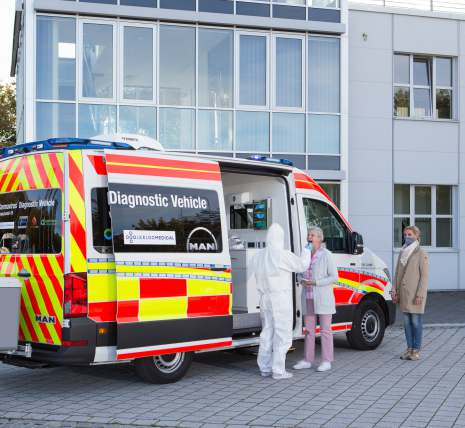 Collaborating with health experts, MAN Truck & Bus recently unveiled its innovative diagnostic vehicle that can be used to detect COVID-19 infections safely and quickly at hotspots and other places where it can easily spread.
Collaborating with health experts, MAN Truck & Bus recently unveiled its innovative diagnostic vehicle that can be used to detect COVID-19 infections safely and quickly at hotspots and other places where it can easily spread.
The company said the rolling laboratory vehicle is based on the MAN TGE van. It is equipped with the innovative molecular diagnostic PCR test equipment Vivalytic from Bosch Healthcare Solutions.
These PCR test devices are currently among the fastest approved devices on the market. The entire process including smear, sample preparation and testing takes less than an hour.
Man Truck & Bus says with more than 500 tests per vehicle and day, the rolling laboratory is perfectly suited for carrying out tests directly on site if a potential infection is suspected, for example in old people’s homes, schools, companies or other institutions. With the help of the MAN Coronavirus diagnostic vehicle, chains of infection can, thus, be interrupted in a targeted manner.
“The innovative MAN coronavirus test vehicle will make a vital contribution to containing the Covid-19 pandemic by providing fast PCR test results on site. The quicker that everyone involved at a new coronavirus hotspot are tested, including all the suspected cases, the more effectively outbreaks and any further spread of the virus can be stopped,” the company said in a statement.
In addition to easy planning of the mobile test vehicle’s deployment, the speed of the tests is another advantage of this innovative product, it added.
When deployed for mobile use, for example at border crossings along the motorway, the MAN coronavirus test vehicle displays another of its strengths: flexibility.
Test capacities can, for example, be quickly relocated as required and deployed exactly where they are needed. The mobile test vehicle is also digital. Four tasks can be performed in it in one continuous process: swab sampling, testing, analysis and communication.
The PCR test results are digitally transferred from the test device to a laptop in real time. That enables a quick report to be sent directly from the MAN van to the responsible health authorities, departments, or to the person tested.
Two innovative vehicle designs
Man Truck & Bus said its new project comes in two innovate designs: one with a standard wheelbase and 3.5 t gross combination weight and one with a long wheelbase and 5.5 t gross combination weight, the other one, the long version equipped with 8 PCR test devices.
The short version serves as a mobile diagnostic vehicle and is equipped with up to 16 Vivalytic test devices by aprimeo diagnostics, a Bosch distribution partner involved in the development. The Bosch Vivalytic test devices are used in specially manufactured rack systems.
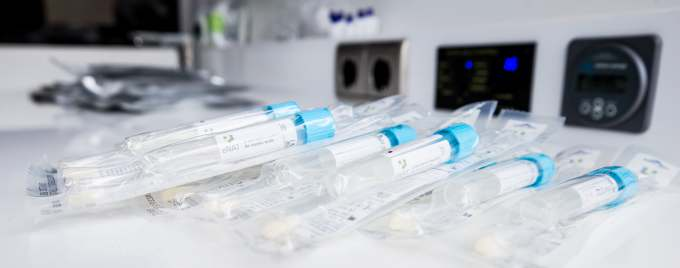 The swab tests are taken outside the vehicle where qualified medical staff take care of the patients. This deployment scenario, with a high throughput of people being tested, is especially suitable for care homes, schools, large events or companies.
The swab tests are taken outside the vehicle where qualified medical staff take care of the patients. This deployment scenario, with a high throughput of people being tested, is especially suitable for care homes, schools, large events or companies.
The impressive feature of the long version is that it is highly flexible in its use, with a separate room for taking swabs located inside the vehicle and awnings on both sides to create additional capacity. This enables a quicker and more frequent change of location.
The long version is equipped with 8 PCR test devices. In order to maintain a one-way system when taking swabs, the MAN TGE has been equipped with two automatic lateral sliding doors.
The mobile MAN coronavirus test vehicle is powered by a 2.0 l turbo diesel engine with 177 hp. It can be optionally provided with all-wheel drive and an 8-speed automatic gearbox.
 The standard fittings include hygienic surfaces, automatic sliding doors, air conditioning system and an auxiliary air-conditioning system as well as an automatic step. As optional extras, the vehicle can be equipped with up to two washbasins (for the test and swab room), a computer workstation with a 220 V connection and a refrigerator.
The standard fittings include hygienic surfaces, automatic sliding doors, air conditioning system and an auxiliary air-conditioning system as well as an automatic step. As optional extras, the vehicle can be equipped with up to two washbasins (for the test and swab room), a computer workstation with a 220 V connection and a refrigerator.
The MAN Coronavirus diagnostic vehicle is perfectly suited for carrying out tests directly on site, for example, if a potential infection is suspected. Swabs are taken outside the vehicle, where qualified medical personnel look after the patients.
Both vehicles are fitted with a MAN TeleMatics box to enable internet access. Other equipment options include:
In this project, Man Truck & Bus said it is not only the vehicle that is unique but also the rapid collaboration from recognized experts in their field.
The result is an innovative, practical overall system to contain the coronavirus pandemic. The idea and concept for the mobile coronavirus test vehicle comes from Leeloo Medical and MAN Truck & Bus.
The ambulance service provider, MKT-Krankentransport, has contributed its expertise in dealing with patients. MAN and AMS Ambulanzmobile are converting the vehicles in line with medical and epidemiological standards.
The inspection and risk assessment of the vehicle was carried out by an expert for epidemiological protection from the Medizinischen Katastrophen-Hilfswerk Deutschland e.V. (MHW). And finally, MAN Truck & Bus has contributed its decades of expertise in implementing special vehicle concepts and their marketing.
The new MAN coronavirus test vehicle for rapid SARS-CoV-2 test results can be used throughout Europe (EU 27+3) and the company said it is now available to order following its test completion in October 2020. (Photos & Text sourced from www.mantruckandbus.com)
The benefits of the MAN coronavirus test vehicle at a glance:
Aiming to reach net-zero emissions by 2050, the company says it will continue to tap advanced technology in transportation to improve delivery performance and safety, complementing its existing fleet of 323 hybrid-electric vehicles.
The impact of climate change has never been more visible than now. Intense wildfires in California claiming more than 94,000 acres of land and 129 million trees, billions of properties lost and thousands of people displaced. Devastating super typhoons and hurricanes occurring more frequent than usual across many parts of the world. Drought in Africa. Melting glaciers. Rising temperatures displacing many species. And the list goes on.
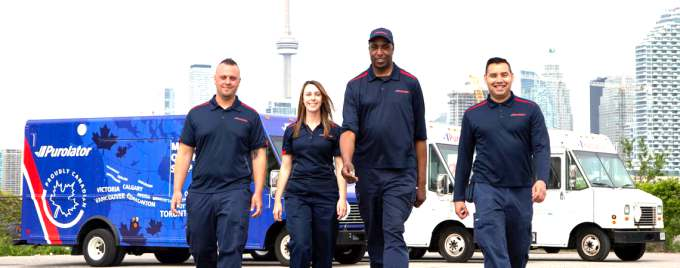 And while governments are largely responsible in creating policies to thwart the acceleration of climate change, businesses and individuals are also doing their part to save the planet.
And while governments are largely responsible in creating policies to thwart the acceleration of climate change, businesses and individuals are also doing their part to save the planet.
In Canada, the country’s leading integrated freight, package and logistics solutions provider, recently launched its innovative delivery vehicles to increase network capacity, reduce its carbon footprint and provide greater fleet flexibility in urban centers.
It’s new fleet of vehicles—the electric cargo bikes and low-speed zero emission cars—offers a last-mile delivery solution to respond to the ever-increasing growth in e-commerce.
“More than ever, we’re committed to helping dense metropolitan cities operate more smoothly through new delivery methods that help reduce greenhouse gas emissions,” said John Ferguson, Purolator President and CEO.
The company is now rolling out new and expanded sustainable operational innovations to lower vehicle emissions and improve customer experience in densely populated areas by:
Testing new fully electric low-speed vehicles to reduce noise and traffic congestion when delivering within busy downtown core areas of Toronto, Ontario, and Montreal, Quebec. The compact size of low-speed vehicles makes delivering on busy streets with limited parking more manageable, as they take up less than half the space of a traditional delivery truck.
Expanding its fleet of electric-cargo bikes (e-bikes) in Montreal to maneuver through pedestrian-only and zero-emission zones and street closures. Additionally, the e-bikes can be parked on sidewalks for delivery within restricted-parking areas. The fleet of e-bikes is housed at Canada’s first urban distribution centre, opened with the City of Montreal.
Piloting automated self-serve parcel lockers at Honoré-Beaugrand subway station in Montreal. This initiative, in partnership with Société de transport de Montréal and the City of Montreal, is one of the first public transit subway systems providing commuters a convenient self-serve option for picking up shipments.
Flexible alternatives
Since the onset of the global COVID-19 pandemic, Purolator says it has seen residential deliveries increase approximately 50 percent, including in areas designated as pedestrian-only or those with limited access for delivery trucks.
Purolator’s low-speed vehicles and e-bikes offer quick service to these spots by providing a flexible alternative for delivery. As regulations around transportation and city logistics continue to evolve, these alternative vehicles provide an agile solution with the ability to deliver the same number of packages as a standard-size delivery truck.
“Purolator has made important sustainability investments as part of our $1B delivering the future growth and innovation plan,” said Ferguson. “We’ve consistently evolved over our 60-year history to stay one step ahead of change. Our goal is to continuously innovate, adapt intelligently and provide workable solutions for the unique challenges of urban growth, along with the growth in B2B, e-commerce and home deliveries, particularly as the economy navigates through the COVID-19 pandemic.”
In the company’s 2019 Corporate Social Responsibility Report, Purolator underscored its commitment to reach net-zero emissions by 2050. To meet that goal, the company will introduce new types vehicles to its fleet, with advanced technology to improve delivery performance and safety, complementing Purolator’s existing fleet of 323 hybrid-electric vehicles, to reduce the organization’s overall greenhouse gas emissions.
 46 million packages this holiday season
46 million packages this holiday season
Purolator said it’s introducing multiple network investments to meet an expected 20 percent jump in peak-season demand compared to 2019.
These include a significant increase in customer access points through new strategic partnerships, an expansion of its fleet of Mobile Quick Stop trucks and new innovative services to enhance health and safety during the COVID-19 pandemic.
“Purolator has a year-round process for managing periods of significant volume fluctuations, and this approach has enabled our team to adapt quickly during the pandemic to meet the needs of businesses and consumers,” said the company’s President and CEO. “During this year’s ‘peak’ season, we expect to pick up and deliver over 46 million packages, averaging 1 million processed each business day. We are ready to deliver for our customers and continue to invest in network capacity to provide safer, simpler and more convenient ways for Canadians to ship and receive packages.”
In addition to its contactless-delivery methods executed earlier this year, the company is also launching new services to augment physical-distancing solutions during the pandemic:
Quick Stop Kiosks launched last holiday season expanded to 12 locations across the country for contactless shipment drop-offs. These include: New locations at select Purolator Shipping Centers, select Michaels retail locations and select Metrolinx GO Transit stations throughout the GTA (with more to come in 2021); Canada’s first contactless one-stop-shop for self-serve package drop-off and pick-up service at the Atrium on Bay retail and office complex in downtown Toronto
Parcel lockers at its busiest terminals for 24/7 shipment pickup and to increase consumer convenience and safety
Curbside pick-up service at 51 Purolator Shipping Centers and 135 Michaels stores across the country
Purolator expects to process 46 million packages, roughly a 20 per cent increase over 2019, between November 1 to December 24.
On Black Friday, the company processed 1.3 million pieces of packages, up by 25% over 2019 and 6.7 million more pieces the week of Cyber Monday. On its busiest day of the year, Nov. 30, the company expects to process 1.4 million pieces, almost 20 per cent more than in 2019.
Purolator’s five-year, $1B delivering the future growth and innovation plan, accelerated during the pandemic to meet the needs of Canadians. The company has added 2,500 to its workforce of 12,000 leading up to holiday season and is continuing to make key investments to service increased demand in the long term.
According to the UNESCO Institute for Statistics, global spending on research & development (R&D) has reached a record high of nearly $1.7 trillion. of the figure, just 10 countries account for 80% of the spending, with China and the United States dominating the share, focused mainly on science and technology.
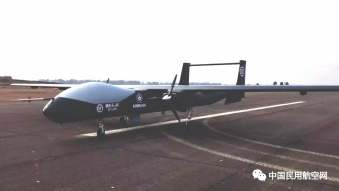 The Coronavirus pandemic brought about enormous unprecedented challenges and uncertainties with profound impact on people’s lives, industries and economies across the world that would take years, if not decades, to recover from.
The Coronavirus pandemic brought about enormous unprecedented challenges and uncertainties with profound impact on people’s lives, industries and economies across the world that would take years, if not decades, to recover from.
Buried in mounting debts and faced with tight resources amid a global meltdown in economic activities, governments and various industries have turned their sights on investing more in new technologies to push for recovery.
According to the UNESCO Institute for Statistics, global spending on research & development (R&D) has reached a record high of nearly $1.7 trillion. Of the figure, just 10 countries account for 80% of the spending, with China and the United States dominating the share, focused mainly on science and technology.
The US continues to lead on tech investment raising as much as $148.75 billion, nearly 50 percent of the global total and more than double that of China, over the last four years, according to Tech Nation, a UK network for tech entrepreneurs.
Globally, e-Commerce giant Amazon, which has expanded its business clout to logistics and air freight, is the top private spender on R&D at $22.6 billion in 2018. Alphabet, Volkswagen, Samsung and Intel rounded up the top 5.
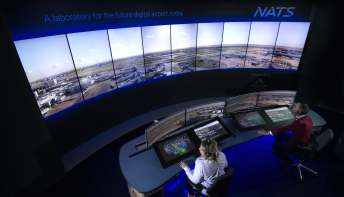 China, however, is fast catching up, reportedly spending as much as $322 billion on R&D for science and technology in 2019. The country is aggressively competing with the US and others in selling their tech products, including building and deploying the 5G or the fifth generation of wireless technology, which would revolutionize how we communicate and do business.
China, however, is fast catching up, reportedly spending as much as $322 billion on R&D for science and technology in 2019. The country is aggressively competing with the US and others in selling their tech products, including building and deploying the 5G or the fifth generation of wireless technology, which would revolutionize how we communicate and do business.
Accelerating digitalization
The new normal requires people to observe social distancing in public spaces, and contactless transactions. This means accelerating digitalization and the use of new technologies in various industries to protect people from getting infected with the virus.
Deloitte, one of the biggest auditing, financial and accounting firms in the world, said the tech industry has helped many people and businesses stay connected during the pandemic and this would have a long-term impact on our future and the way industries do business.
Deloitte forecasts the global economic recovery to begin in late 2021 with uncertainties still looming in the horizon.
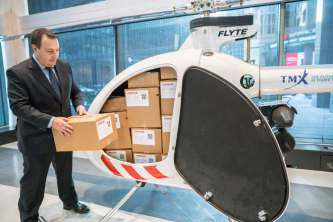 “The virus follows a wave pattern, abating and then peaking again in multiple global geographies. Economic recovery begins late 2021. Recovery slow in early 2022 and speeds up by second half of 2022. Chinese economy rebounds slowly. Deep and prolonged recession in the West affects supply chains and consumer demand. Fiscal stimulus limits business failures, but does not boost spending,” Deloitte said.
“The virus follows a wave pattern, abating and then peaking again in multiple global geographies. Economic recovery begins late 2021. Recovery slow in early 2022 and speeds up by second half of 2022. Chinese economy rebounds slowly. Deep and prolonged recession in the West affects supply chains and consumer demand. Fiscal stimulus limits business failures, but does not boost spending,” Deloitte said.
Kevin Smith, Head of KPMG Private Enterprise in EMA, said we’re now seeing the acceleration on digital transformation, especially the use of artificial intelligence (AI) and machine learning, due to the pandemic.
“Despite the challenges that the entire world has faced over the past few months, one of the positive outcomes of COVID-19 that people were talking about was the acceleration of digital transformation, especially artificial intelligence and machine learning …. these technologies will, in fact, be instrumental in collecting and analyzing the enormous sets of data that will be vital to our post COVID-19 recovery,” Smith said in a recent industry webcast which KPMG, a global network of independent member firms offering audit, tax and advisory services, organized.
Aviation still in slump as cargo rises
Aviation remains in a “coma” following the abrupt cessation of travel worldwide to prevent the spread of COVID-19. No one can say with certainly when this once vibrant industry will return to normal with the vast majority of people still reluctant to fly for economic and health reasons.
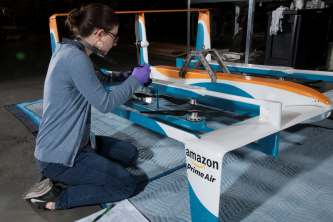 The International Air Transport Association (IATA) has since called on governments to work together to urgently find ways to re-establish global connectivity by re-opening borders and keeping relief measures to sustain airlines during the COVID-19 crisis.
The International Air Transport Association (IATA) has since called on governments to work together to urgently find ways to re-establish global connectivity by re-opening borders and keeping relief measures to sustain airlines during the COVID-19 crisis.
“Many airlines will not have the financial means to survive an indefinite shutdown that, for many, already exceeds a half-year. In these extraordinary times, governments will need to continue with financial and other relief measures to the greatest extent possible. It’s a solid investment in the recovery because each airline job saved supports 24 in the broader economy. And a functioning airline industry will be a critical enabler for economies to regain their full power,” said Alexandre de Juniac, IATA’s Director General and CEO.
In July, global passenger traffic fell by nearly 80 percent compared to July 2019 levels despite some airports and airlines resuming operations.
The air cargo industry, on the other hand, instantly became the star of the show hauling across continents vital medical supplies and equipment, including urgently needed necessities such as food and medicines, in huge quantities.
Demand for more freighters prompted many airlines to convert passenger aircraft to so-called all-cargo flights to increase capacity. The loss of belly-hold capacity from commercial flights, however, remains a big blow to the air freight industry.
IATA said cargo volumes remain low compared to the pre-Covid era but not as much as that of passenger traffic. With global economic activities slowly picking up based on improving manufacturing output and new export orders data, air freight is up for more business.
“Economic indicators are improving, but we have not yet seen that fully reflected in growing air cargo shipments. That said, air cargo is much stronger than the passenger side of the business. And one of our biggest challenges remains accommodating demand with severely reduced capacity. If borders remain closed, travel curtailed and passenger fleets grounded, the ability of air cargo to keep the global economy moving will be challenged,” said de Juniac.
The rise of AI, APIs and other new technologies
Long before COVID-19 struck, the air cargo industry took on steps to transition from outdated and complicated legacy systems to the more efficient tech-driven and paperless systems.
The pandemic though forced the industry to accelerate streamlining its operations, reduce costs and optimize its efficiency by using more customized interfaces used for networking planning, flight operations, revenue accounting, and other processes.
Major air cargo carriers have since switched to tech-driven systems and beefed up investment on new technologies which are far more efficient that the traditional way apart from improving transparency in the supply-chain operations.
These include using AI, APIs, GPS tracking solutions and other new technologies used in promoting their services, providing customer service, tracking, booking shipments online or making payments.
The use of cloud systems is also in high demand this year and so are videoconferencing and remote collaboration to keep staff productive and business as well despite the lockdowns.
According to IATA, the e-AWB is now used for 2 out of 3 shipments, signaling that the industry is ready to take on digitalization to the next level and go beyond EDI and messaging technologies.
Currently, IATA said the e-AWB network covers 63% of worldwide trade (the e-AWB network corresponds to locations where the legal framework has been created to allow an electronic contract of carriage) and their goal is to have a 100% penetration by 2022.
China’s unmanned cargo planes
With more than 1.4 billion people, China has the world’s biggest domestic market and consumer demands are increasing. Outside of China, the Chinese population is also rising in different parts of the world.
Following the pandemic, China had pledged to keep strengthening its domestic market while luring more foreign investors. The seamless movement of goods is an important aspect to the success of this initiative and the country has vowed to improve its air, rail, land and sea transport systems.
Last year, China’s biggest air cargo company, SF Express, fourth largest globally after FedEx, UPS and DHL, signed a memorandum of understanding with Searidge Technologies, among other firms, to set up digital remote air traffic control towers in China.
Pat Urbanek, an IT expert and executive at the Canadian firm Searidge Technologies which specializes on remote digital tower solutions with presence in 25 countries, said their digital remote tower project in China is in line with SF’s plan to use plane-size cargo drones capable of carrying more than 1.5 tons, mainly parcels for now.
“SF Express is the fourth largest cargo and freight company in the world behind FedEx, UPS and DHL. Their plan is to be able to provide parcel delivery within 36 hours all over China,” Urbanek told Air Cargo Update.
In August, SF successfully operated its unmanned cargo plane, the FH-98, cruising at fast speed. Its success ushers the beginning of a new era in China whereby autonomous cargo planes will be used to fly domestic goods.
SF’s subsidiary, Feng Bird Airlines, will operate the large-scale drones for cargo which is mainly targeting to serve remote areas across China.
Urbanek said the future looks bright with technology working to enhance the old systems for the greater good of humanity.
Russians believe, “He who doesn’t take risks, never drinks champagne” which means fortune favors the brave than those who don’t take any risk at all.
The country’s past and present may be complex but there’s no doubt it has great contributions to humanity’s progress inventing the Periodic Table of Elements; transformers; unique models of planes; the helicopter; synthetic rubber; Sputnik 1, the world’s first satellite; the AK47, the Russian vodka; radio; tape recorder, literary masterpieces, to name a few.
In today’s interconnected world, Russians are also making an indelible mark in different parts of the world, in their own ways. Roman Gilmanov, Partner & CCO at Global Service Solutions (GSS), is one of them.
Headquartered in Sharjah, one of the seven emirates in the United Arab Emirates, GSS continues to be a force to be reckoned with in the global air cargo industry under Gilmanov’s helm, deploying much needed humanitarian goods to far flung areas in Afghanistan, Yemen, Iraq, Somalia, and elsewhere, reeling from the impact of a lingering pandemic.
Supporting airlines with its own fleet of aircraft and adding load to existing routes, GSS has become an important partner of many carriers since its inception a decade ago. The company also offers unique aviation solutions for heavy or outsized cargo, dangerous goods, military cargo, perishables, live animals, etc. It also offers group charters.
“The pandemic has brought unique challenges and opportunities for the air cargo industry proving our resiliency and agility,” said Gilmanov. “We are facing a very important time in our history and our team at GSS are always ready to support our customers’ needs.”
“Let us also take this opportunity to let our esteemed patrons and beloved well-wishers know that we have also added URC (Xinjiang, China) to our CCAR 129 during this phase. Under the CCAR129 certification, we also operated many humanitarian flights from all parts of China like Shanghai (PVG), Guangzhou (CAN), Nanjing (NKG), Tianjin (TSN) and Xinjiang (URC) to different parts of the world like Azerbaijan (GYD), Georgia (TBS), Delhi (DEL) and Kuwait (KWI),” he added noting that during these challenging times, GSS has also done multiple flights to Africa, delivering 900 tons of multi-category cargo.
An Economics graduate at Moscow International University, the first private university in Russia, Gilmanov believes combining hard work with responsibility yields growth for any company.
Since joining GSS five years ago, Gilmanov has successfully struck monumental deals such as buying one Boeing 747-200F, setting up AOC in Moldova and Romania, safely transporting uranium on behalf of the US government and negotiating for the acquisition of three Boeing 747-400F.
Gilmanov, who also studied English for four years in Switzerland’s Aigion College, said he is motivated to keep GSS growing, saying, “I am encouraged by the trust that our clients give us. And the trust of our staff that we will take care of them. Working together as a responsible team, we are capable of realizing our full potential as a company.”
This busy father of two girls said while the company keeps him motivated, his family provides him much needed encouragement and support that no money can buy.
“Spending time with family, playing outdoor games and maintaining that exercise routine well, takes care of my mind, body and soul,” he sums it up, adding, every vacation he takes is meaningful as long as his family is with him.
Family is indeed that unbreakable shield we all come home to when the going gets tough, empowering us to recharge and face the world again just like another day.
DP World, and Messe Frankfurt’s Hypermotion have announced a global partnership that will drive innovation and the use of digital technology in logistics and mobility.
Hypermotion, as the multimodal innovation platform for smart solutions and future transport systems, brings together innovators, providers and users who set new standards for tomorrow’s logistics and mobility. With this announcement, DP World has become a global partner of Messe Frankfurt’s Hypermotion events.
The networking-event fosters the exchange of knowledge, new business models and connection among all modes of transport. Ever since its first edition in 2017, the format is growing and raising more attention, taking place as a hybrid event in Frankfurt in November 2020 and launching its first oversea edition in Dubai in November 2021.
Speaking on the occasion, Sultan Ahmed bin Sulayem, Group Chairman and CEO of DP World, said, “Dubai has always pushed the boundaries of innovation – a trait that is in DP World’s DNA. This spirit of innovation has enabled us to become a world leader in smart end-to-end logistics.”
Through their global partnership, Hypermotion is about to integrate DP World into the network of scientists, start-ups, companies, city planners and governmental entities, which are both seeking and offering solutions for future logistics and mobility.
In this regard, the Hypermotion events in Frankfurt and Dubai represent a suitable platform for DP World to build up and maintain its relationships in the logistics and mobility sector and to pursue strategies for strengthening its image, particularly with regard to the logistics string. DP World will support Hypermotion in the form of an exclusive headline sponsorship for the logistics string within Hypermotion Frankfurt.
DP World has grown from a local port operator to a global trade enabler. The company has now a team consisting of over 53,000 people in a global network of 128 business units in 60 countries across six continents. Their operations include ports and terminals, but also industrial parks, logistics and economic zones, maritime services and marinas.